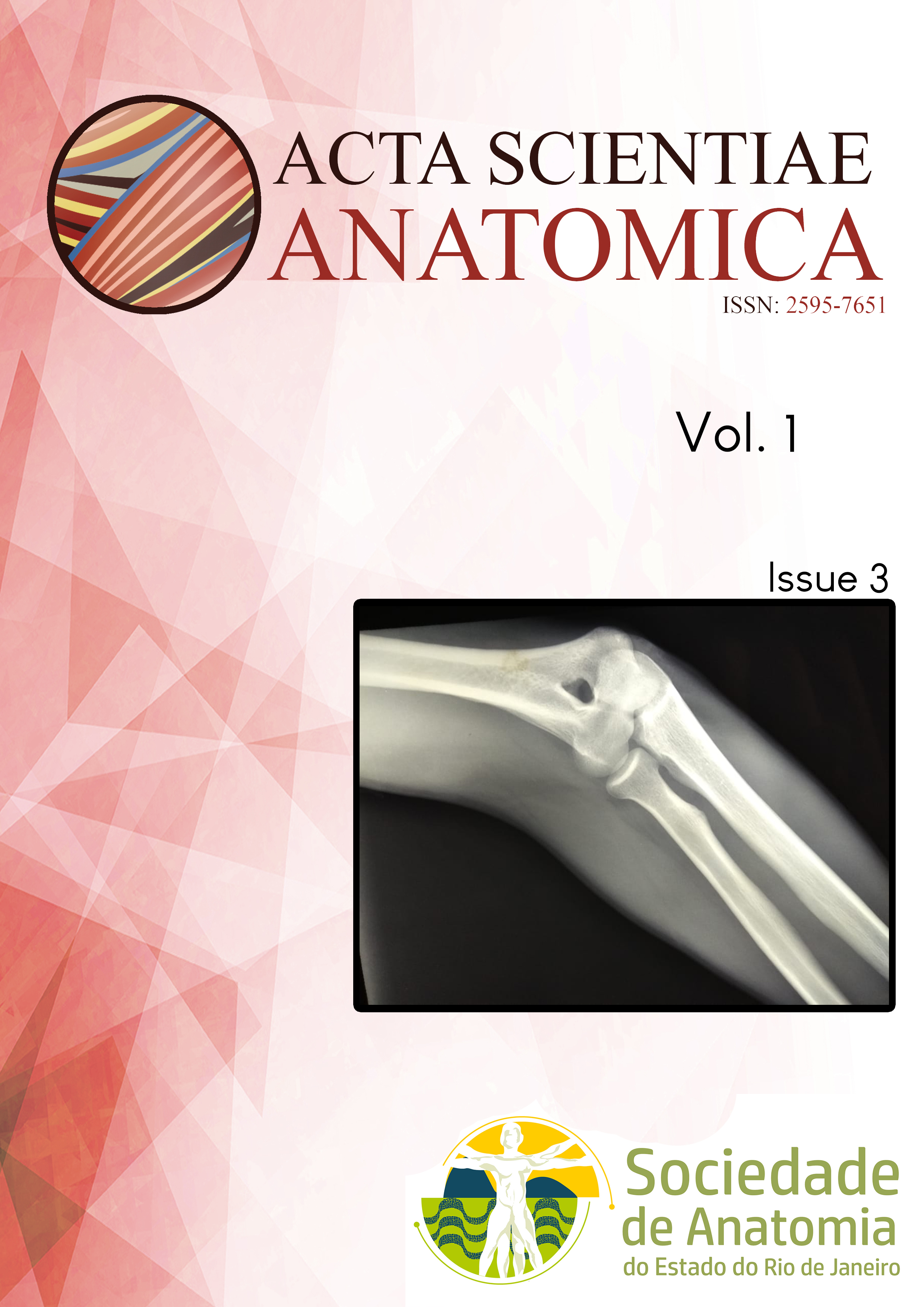Morphology of the esophagus using formalin-fixed samples
DOI:
https://doi.org/10.65053/asa20190304Keywords:
esophagus, formalin-fixed, megaesophagus, esophagus measurementsAbstract
Introduction: The esophagus is a muscular tube connecting the pharynx to the stomach, which carries food and liquid from the mouth into the stomach. Previous studies have not provided detailed descriptions of the conditions of the esophagus, as measured using standards prepared in formalin. Material and Methods: Post-mortem measurements can be important to assist in diagnosis of the pathology of the esophagus. In this work, measurements were made of 73 formalin-fixed esophagi obtained from autopsied patients who did not present any evidence of pathologies in this specific organ. The measurements of the esophagus were made after transverse section at the level of the lower border of the cricoid cartilage. Measurements of the organ were standardized as follows: esophageal length, external perimeter in the cardia, lower external perimeter, average external perimeter, and upper external perimeter. Results: The average height of the men in the study was 9.5 cm greater than the average height of the women. Correlation between the height of the individual and the esophagus measurements showed that the greater the height, the greater the length and upper external perimeter of the esophagus. A greater length was associated with a greater upper external perimeter. The cardia was larger than all the perimeters. The data showed that the esophagi were tubular in shape, except at the lower end, where the diameter was larger than in the other regions. Conclusion: These measurements should assist in the identification and elucidation of chagasic megaesophagus, idiopathic megaesophagus, and other esophagus-related disorders.
Downloads
Published
Issue
Section
License
Copyright (c) 2025 Acta Scientiae Anatomica

This work is licensed under a Creative Commons Attribution-NonCommercial-ShareAlike 4.0 International License.
This journal publishes open-access articles under the Creative Commons Attribution 4.0 International (CC BY 4.0) license. This permits use, sharing, adaptation, distribution, and reproduction in any medium or format, as long as appropriate credit is given to the authors and the source, a link to the license is provided, and any changes are indicated. License: https://creativecommons.org/licenses/by/4.0/








